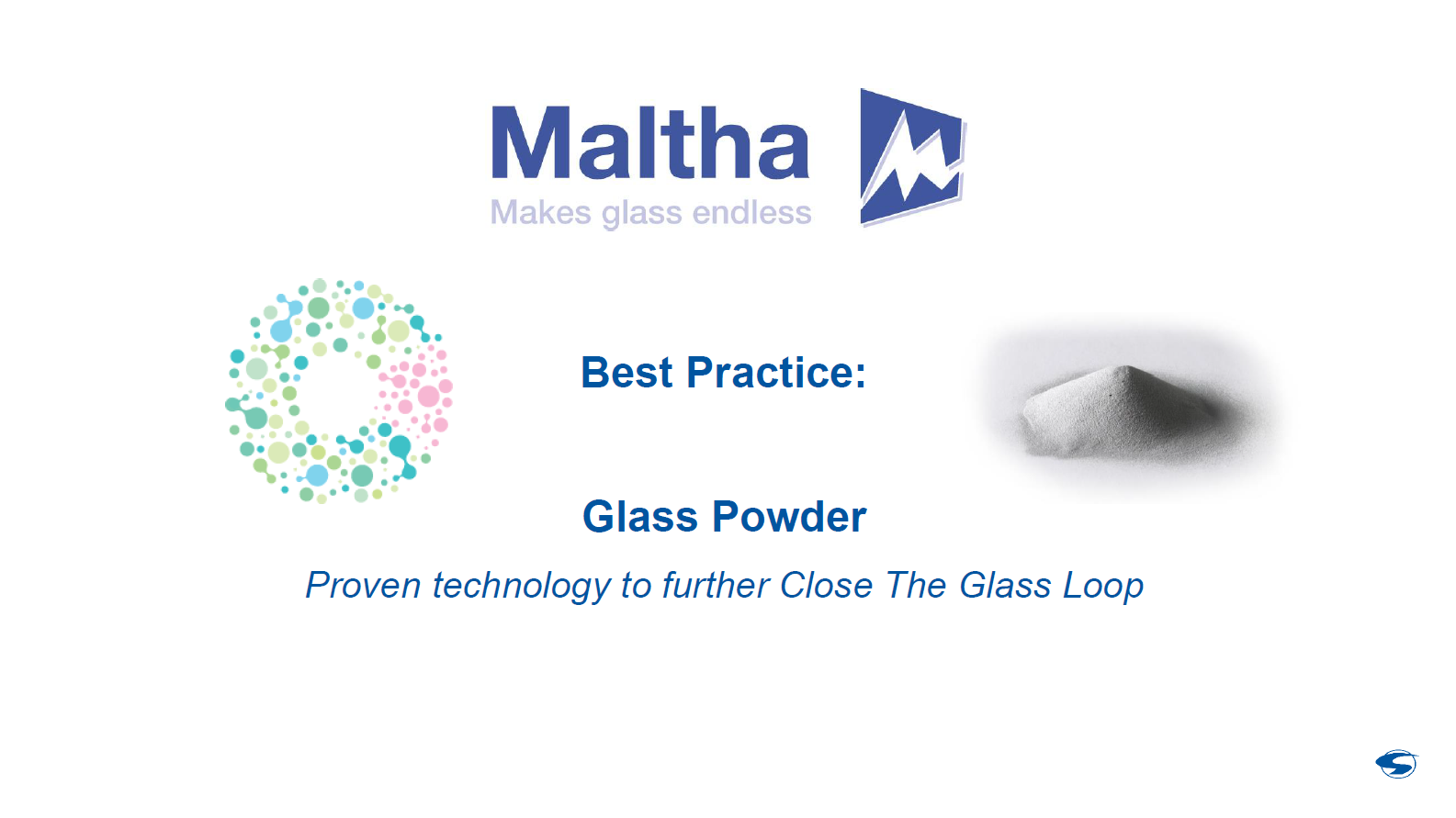22 February 2022
Glass Powder Technology to Further Close the Glass Loop – Bianca Lambrechts
Before using waste glass to make new bottles or jars, all non-glass materials like metals, paper, plastic or ceramics must be sieved off. This process allows recyclers to obtain high-quality cullet.
But after sieving off bigger pieces, what to do with the glass fraction that is so small that it remains mixed with unwanted materials? Find out how this problem can be addressed in our best practice presentation!

It is not rare that used glass is mixed with other materials when disposed of. Current collection methods (such as compacting trucks) or design choices (thinner glass) make it more likely that glass will break into small bits before reaching the sorting centre. It makes it more difficult to sieve off unwanted materials. With 15% of collected glass being a fine fraction it means that quite a lot of material is at risk of becoming lost for recycling.
Glass powder technology is one of the solutions to this problem. In the process, fine glass fraction is cleaned from metals, plastics, paper and organics, and it is then crushed into a grain size below 0.8 to 1 mm. Ceramics, sand or porcelain pieces that still remain in the mix will dissolve in the melting box. It means that this powder can be used in furnaces for bottle-glass production.
Watch our best practice video with Bianca Lambrechts, Manager Sales & Sourcing at Maltha Group, to find out more about glass powder:
This best practice was part of episode 1 of our 90 Minutes to Close the Loop series. You can watch the full episode here.

